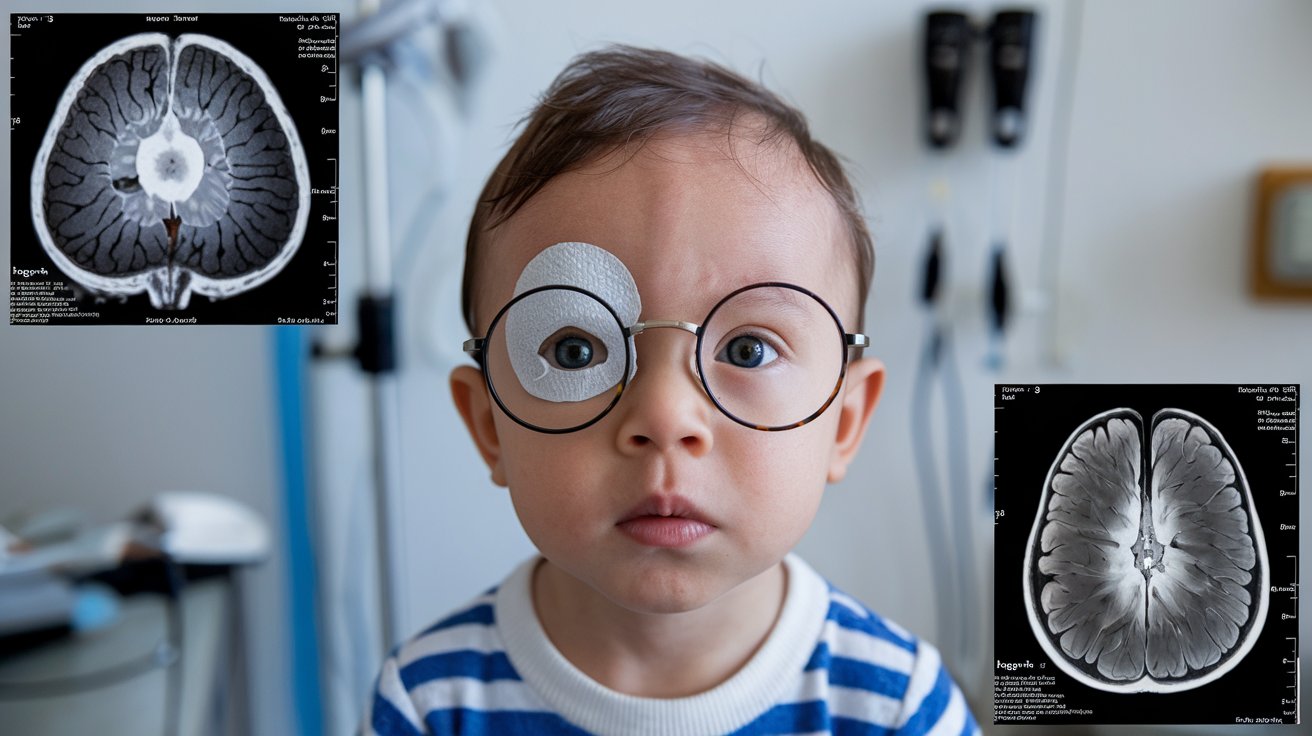
What is Oculocerebrorenal Syndrome? Oculocerebrorenal Syndrome, also known as Lowe syndrome, is a rare genetic disorder that primarily affects males. This condition is marked by a triad of symptoms: congenital cataracts, intellectual disability, and renal tubular dysfunction. Caused by mutations in the OCRL gene, it disrupts various cellular processes, leading to a wide range of health issues. Patients often face severe vision problems, cognitive challenges, and kidney complications. Despite its rarity, affecting about 1 in 50,000 to 1 in 100,000 male births, understanding and managing this syndrome requires a multidisciplinary approach. Early diagnosis and supportive care can significantly improve quality of life.
Key Takeaways:
- Lowe syndrome, also known as Oculocerebrorenal Syndrome, is a rare genetic disorder primarily affecting males. It presents with congenital cataracts, intellectual disability, and renal tubular dysfunction, requiring comprehensive care from a team of healthcare professionals.
- Early diagnosis and supportive care are crucial for managing Lowe syndrome. Genetic testing, interdisciplinary care, and ongoing research play vital roles in understanding and addressing the challenges faced by affected individuals and their families.
What is Oculocerebrorenal Syndrome?
Oculocerebrorenal syndrome, also known as Lowe syndrome, is a rare genetic disorder that affects multiple systems in the body. It primarily impacts males and presents a unique set of challenges.
-
Definition and Classification: Lowe syndrome is an X-linked recessive disorder. It falls under inherited cerebrorenal syndromes, which also include Dent disease type 2 due to overlapping symptoms caused by OCRL gene mutations.
-
Incidence: This syndrome is extremely rare, affecting about 1 in 50,000 to 1 in 100,000 male births. Its rarity makes extensive data collection difficult.
Genetic Basis and Mechanisms
Understanding the genetic underpinnings of Lowe syndrome helps in diagnosing and potentially managing the condition.
-
Genetic Basis: Mutations in the OCRL gene cause Lowe syndrome. This gene encodes the enzyme inositol polyphosphate 5-phosphatase OCRL-1, crucial for regulating membrane phospholipids and the actin cytoskeleton.
-
OCRL Gene Function: The OCRL gene's enzyme is involved in endocytic trafficking and actin cytoskeleton dynamics, essential for cell shape and movement.
-
Mechanisms Underlying Phenotypic Spectrum: The wide range of symptoms in Lowe syndrome is not fully understood. More research is needed to uncover how OCRL gene mutations lead to diverse clinical manifestations.
Clinical Features
Lowe syndrome presents a triad of symptoms that significantly impact the patient's life.
-
Congenital Cataracts: Bilateral cataracts are present at birth, severely impairing vision if not treated promptly.
-
Intellectual Disability: Severe intellectual impairment is a hallmark, leading to cognitive and behavioral challenges.
-
Renal Tubular Dysfunction: Proximal renal tubular dysfunction can progress to renal failure, characterized by Fanconi syndrome, including aminoaciduria, hypercalciuria, and low-molecular-weight proteinuria.
Additional Symptoms
Beyond the classic triad, patients may experience other symptoms that complicate their condition.
-
Muscular Hypotonia: Severe neonatal hypotonia is common, leading to developmental delays.
-
Behavioral Problems: Many patients face behavioral issues, including tantrums and maladaptive behavior.
-
Arthropathy: Debilitating joint issues can develop, affecting mobility and quality of life.
-
Seizures: Some patients are prone to seizures, adding to the neurological complexity.
Ocular Manifestations
Eye-related symptoms are significant in Lowe syndrome, often requiring specialized care.
-
Congenital Cataracts: Present at birth, these cataracts can lead to amblyopia and severe visual impairment if untreated.
-
Glaucoma: About 50% of patients develop glaucoma, further compromising vision.
-
Corneal Keloids: Some patients may exhibit corneal keloids, adding to ocular complications.
Renal Manifestations
Kidney issues are a critical aspect of Lowe syndrome, often determining the patient's prognosis.
-
Fanconi Syndrome: This includes aminoaciduria, hypercalciuria, and low-molecular-weight proteinuria, which can progress to renal failure.
-
Renal Failure: Many patients do not survive beyond 40 due to renal failure, although proper management can extend life expectancy.
Neurological Signs
Neurological symptoms are prominent and often severe in Lowe syndrome.
-
Intellectual Disability: Severe intellectual impairment is a hallmark of the syndrome.
-
Neonatal Hypotonia: Severe neonatal hypotonia is common, leading to developmental delays.
-
Seizure Susceptibility: Some patients are prone to seizures, adding to the neurological complexity.
Diagnosis and Treatment
Early diagnosis and appropriate treatment are crucial for managing Lowe syndrome.
-
Diagnosis: Genetic testing for OCRL gene mutations is essential for confirming the diagnosis. Comprehensive clinical evaluations, including ophthalmological, neurological, and renal assessments, are necessary.
-
Treatment: Treatment is largely symptomatic and supportive. Regular ophthalmological care, renal management, and behavioral support are crucial.
Life Expectancy and Care
Managing Lowe syndrome requires a comprehensive approach involving multiple healthcare professionals.
-
Life Expectancy: Many patients do not survive beyond 40 due to renal failure, although some may live longer with proper management.
-
Interprofessional Care: An interdisciplinary team, including pediatricians, nephrologists, ophthalmologists, psychologists, and social workers, is essential for comprehensive care.
Genetic Counseling and Research
Genetic counseling and ongoing research are vital for families affected by Lowe syndrome.
-
Genetic Counseling: Helps families understand the inheritance pattern, risk of recurrence, and implications of the diagnosis on family planning.
-
Carrier Assessment: Identifying female carriers who may transmit the mutation to offspring is critical for genetic counseling and family planning.
-
Research and Future Directions: Ongoing research focuses on understanding the molecular mechanisms and developing therapeutic strategies, including gene therapy and pharmacological interventions.
Patient Support and Advocacy
Support groups and advocacy organizations play a crucial role in helping families navigate the challenges of Lowe syndrome.
-
Patient Support and Advocacy: These groups raise awareness, provide emotional support, and collaborate with healthcare providers to improve care and outcomes.
-
Clinical Trials: Participation in clinical trials can provide patients with access to innovative therapies and contribute to the body of knowledge on the condition.
-
Importance of Early Diagnosis and Supportive Care: Early intervention can help prevent life-threatening complications and maximize the quality of life for affected individuals.
Understanding and Managing Lowe Syndrome
Lowe syndrome, or Oculocerebrorenal Syndrome, is a rare genetic disorder that affects multiple systems in the body. With its classic triad of congenital cataracts, intellectual disability, and renal tubular dysfunction, it presents significant challenges for affected individuals and their families. Early diagnosis through genetic testing and comprehensive clinical evaluation is crucial for effective management. Treatment focuses on symptomatic relief and supportive care, including regular ophthalmological check-ups, renal management, and behavioral support.
Interprofessional care involving pediatricians, nephrologists, ophthalmologists, and psychologists is essential for holistic management. Genetic counseling and carrier assessment are vital for family planning and understanding the inheritance pattern. Ongoing research and participation in clinical trials offer hope for future therapeutic advancements. Patient support and advocacy groups provide invaluable resources and emotional support. Early intervention and comprehensive care can significantly improve the quality of life for those affected by Lowe syndrome.
Frequently Asked Questions
Was this page helpful?
Our commitment to delivering trustworthy and engaging content is at the heart of what we do. Each fact on our site is contributed by real users like you, bringing a wealth of diverse insights and information. To ensure the highest standards of accuracy and reliability, our dedicated editors meticulously review each submission. This process guarantees that the facts we share are not only fascinating but also credible. Trust in our commitment to quality and authenticity as you explore and learn with us.


